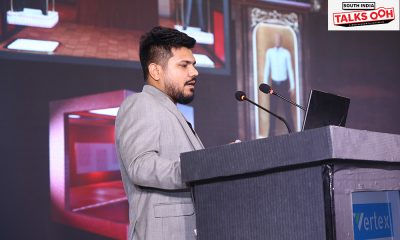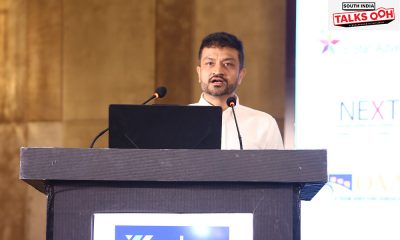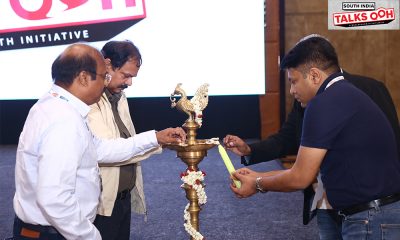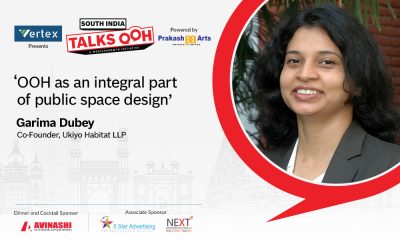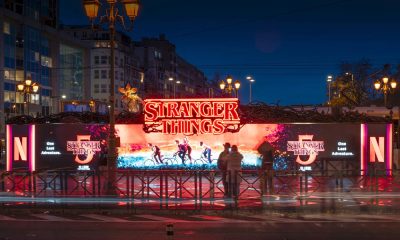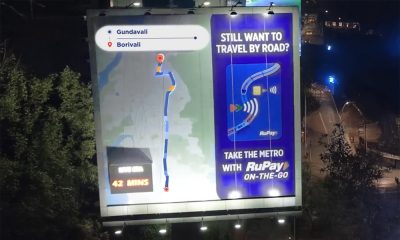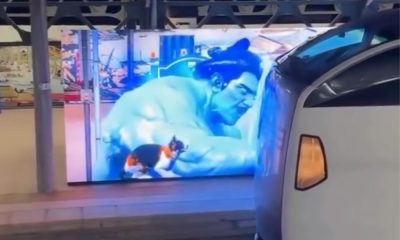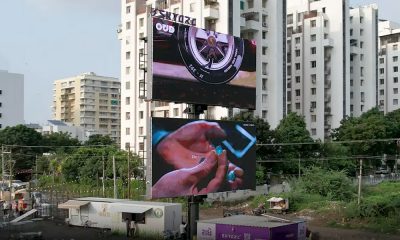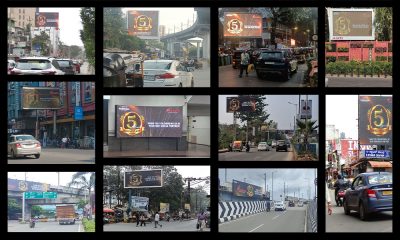Talks OOH
“OOH as an Integral Part of Public Space Design”: Garima Dubey’s Vision at South India Talks OOH
Garima’s topic, “OOH as an Integral Part of Public Space Design,” painted a picture where advertising transcends its traditional disruptive role, becoming an enriching element of the urban experience.
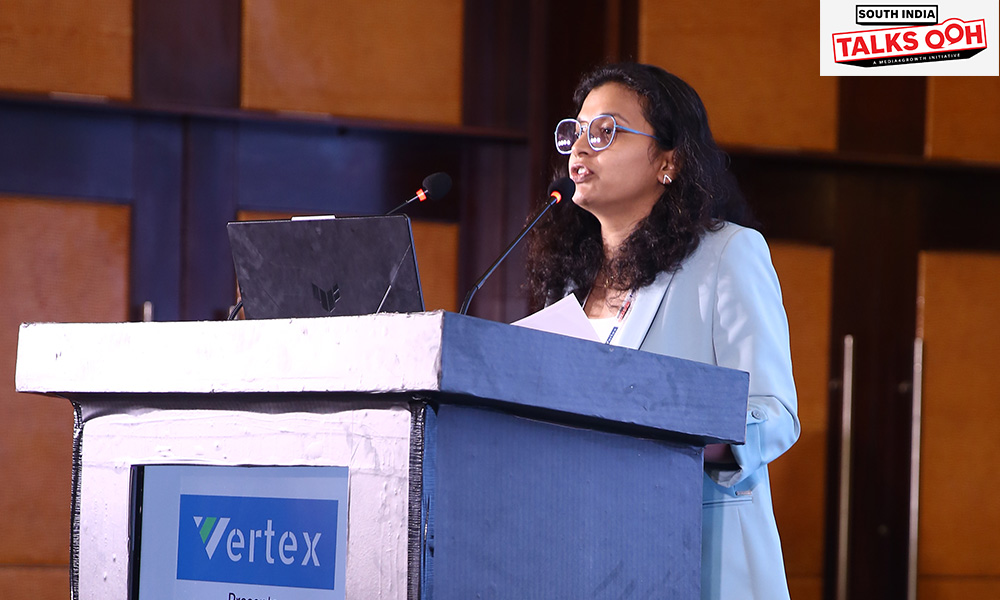
At the Third South India Talks OOH event, Garima Dubey, Co-Founder of Ukiyo Habitat LLP, presented a compelling vision for the future of out-of-home (OOH) advertising, advocating for its seamless integration into the very fabric of our cities. Her topic, “OOH as an Integral Part of Public Space Design,” painted a picture where advertising transcends its traditional disruptive role, becoming an enriching element of the urban experience.
The blurring lines of advertising and urban space
Garima began by highlighting the blurring boundaries, stating, “It is harder to tell where advertising begins and where the city ends.” She emphasized the evolution beyond static posters, with OOH becoming more experiential, digital, and contextual, ultimately becoming “a part of the city’s own narrative.” This shift, she argued, moves advertising from an interruption to a resumption, like “that white character in a movie that doesn’t say much, but changes the entire plot.”
The role of urban design and place-making
Drawing attention to the principles of urban design, which focuses on “what happens between these buildings,” Garima illustrated how well-designed public spaces – “where public space becomes the stage for everything” – provide the ideal canvas for integrated OOH. Examples like the revitalized streets of Delhi showcased how “design that makes the favourite place livable, legible, and meaningful” can coexist with thoughtful branding. The transformation of the Sabarmati Riverfront in Ahmedabad, from a “neglected flood water stretch” to a beloved public space, further underscored the power of good urban design.
Garima then introduced the concept of “place-making,” defining it as “a process of transforming spaces into places. Places that people love, use, and feel attached to. Empty spaces into beloved spaces.” The vibrant makeover of a Milan street intersection demonstrated how “not with a big budget, but with bold colors and smart thinking,” urban spaces can be redefined. Integrating advertising thoughtfully into place-making, she asserted, allows brands to “actually add value to urban life rather than just seeking attention.”
Earning presence in the urban fabric
In the context of expanding and increasingly dense cities, Garima stressed that “today, attention is not enough. You need to earn a presence by adding value to the urban experience.” She positioned urban spaces as vital points for branding, stating, “Our streets, parks, and transit hubs, these are not power places. They are the places where people connect, pause, experience the city, and that’s why brands have a huge opportunity here. Not to dominate these spaces, but to enrich them.”
Iconic examples of integrated OOH
Iconic examples like the evolution of Times Square in New York City, from a “meeting slot machine” to an immersive public space where “digital art, commerce, and culture co-exist,” showcased the potential for successful integration. Garima also highlighted the possibilities offered by dynamic digital facades in cities like Dubai.
The importance of context and creative design
The key to this seamless blend, according to Garima, lies in “understanding the context” and applying “design thinking creatively.” The example of Gardner’s shade structure, offering practical relief while subtly showcasing their product, illustrated how “advertising stops being a message and starts becoming a movement.” Similarly, their playful swing advertisement exemplified participatory branding where “the ad becomes a place.” Coca-Cola’s “hug machine” further demonstrated the power of interactive branding.
Cultural integration and community engagement through branding
Garima also highlighted the cultural integration achieved through initiatives like the Street Art India Foundation’s collaborations, embedding branding into the “cities’ cultural fabric.” The transformation of neglected streets into vibrant public spaces through art underscored the power of purposeful partnerships where “storytelling space and sponsorship come together with purpose.” Innovative approaches in transit hubs, like Mumbai Metro station branding, turn “transit hubs into storytelling arenas.” Zomato’s creative metro car activation showcased bold and immersive urban interventions.
Tactical urbanism and the role of brand sponsorship
Introducing the concept of “tactical urbanism,” Garima suggested utilizing temporary interventions to transform neglected urban spaces, turning “garbage in a site that is basically an opportunity, not an obstruction.” The success story of the High Line in New York City demonstrated the potential of public-private partnerships in creating beloved public spaces.
Towards a future of collaborative OOH design
Looking towards the future, Garima called for a new model of “multi-stakeholder collaboration” involving brands, governments, designers, communities, and media. She envisioned a future where “the future is not branding work versus public good but branding through public good.” Her guidelines for designing OOH with purpose included “contextual sensitivity,” “functional integration,” “opportunity for people to interact,” and “aesthetic harmony.”
Navigating challenges and embracing a new vision
While acknowledging potential risks like over-commercialization and regulatory complexities, Garima emphasized that “balance is the key to avoid it” and that “policy must manage innovation, equity and aesthetics.” Ultimately, her message was clear: “Think beyond visibility, think value. Design with empathy, collaborate deeply and most of all, make the city a better place because you are also a part of it.” Her concluding remarks resonated with a powerful call to action: “Let’s build cities where ads don’t just sell, they support, where brands don’t just speak, they listen and where public spaces are not a battleground but a canvas.”
Garima’s insightful presentation at the Third South India Talks OOH offered a compelling roadmap for the future of OOH advertising, one where it evolves from a mere visual intrusion to an integral and value-adding component of the public space design, ultimately enriching the urban experience for all.
-

 Creative Concepts
Creative ConceptsDisney’s Percy Jackson season 2 makes splash with 4D billboard activation
-

 Creative Concepts
Creative ConceptsNMACC’s snowfall billboard promotes The Nutcracker on Ice
-

 Markets in Focus
Markets in FocusPwC forecasts India’s OOH revenue to near $800M, powered by DOOH and measurement
-
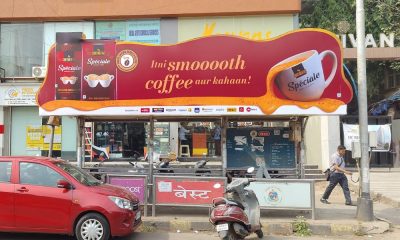
 Campaigns
CampaignsContinental Coffee Speciale unleashes sensory OOH blitz in Mumbai
